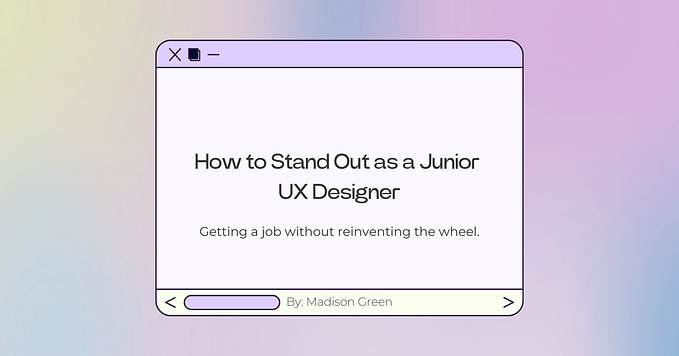Modern UX design is killing creativity
Developing a better user experience requires taking risks

The aim of modern UX design is to solve user needs by reducing friction and providing effective solutions to improve their experience — a systematic and predictable approach generally accomplishes this strategy. But what if the best way to solve user needs is unpredictable and may temporarily require a degree of friction?
Sometimes users do not know what they want until we discover and push unique concepts that best solves their needs.
A proper UX ideation phase includes quantitative data, rigorous testing, and vast amounts of research. Add in detailed personas and colored post-it notes on a whiteboard, and you have a professional-looking UX strategy. This systematic plan serves in formulating practical design methods and delivering the best user experience. However, many solutions we use today were not always evident or discovered through modern research methods. Some solutions required creative risk-taking before becoming a standardized user experience.
Bad UX can lead to good UX

Not long ago, the “hamburger” navigation symbol was a foreign concept to web designers and particularly web users. This item was even considered a friction point for users who had to invest time and energy learning where the menu or navigation was lurking. One way to mitigate this frustration was to add the word “menu” next to the icon. However, today, many websites and apps use this navigation symbol without the word menu attached. This new user behavior is the result of the progressive process of blending familiar and unfamiliar ideas to develop new relationships and meaning.
Adding an unfamiliar element or behavior to a website or app is a considerable gamble. However, sometimes users do not know what they want until we discover and push unique concepts that best solves their needs. And the only way to present these ideas is through experimentation, creative risk-taking, and the hope users will embrace the new experience. My article, The World Needs More Outspoken Creatives, speaks to the necessity of facilitating creative thinking and adopting the changes necessary to move forward for better outcomes.
Of course, we can do testing to evaluate user’s feedback for new items or experiences. But this method cannot necessarily measure the long-term acceptance of fresh UX concepts. This notion is similar to the inevitable push of culture to adopt progressive societal beliefs. There will always be a group accepting of new ideas and a group resistant to the shift. Nonetheless, gradual progressive and creative thinking is unavoidable and necessary to move forward.
Design by committee
Many contemporary websites and apps look similar because UX research prescribes how design and layout ideally appear and function. This echo chamber of user and business logic influences many design decisions. However, the truth is a uniquely creative approach can add unforeseen value and relationships.
There is nothing inherently wrong with using a proven formula to provide an effective product or experience. After all, a product or service’s ultimate purpose is to serve the customer and make money for the business. And the best way to do that is to be safe and go with what works, even at the cost of exploring potentially better but riskier creative solutions.
It can be challenging to persuade stakeholders, clients, and non-designers to pursue creative ideas without objective data or research. My article Can design instinct survive modern UX methods offers solutions designers can use to have their voice heard.
The risk is worth the reward
Sometimes good ideas are not so obvious. All the data available can not replace the reward of a risky creative idea that solves a problem and catches on. We like to think that answering user needs can be achieved through testing, research, and ideation pow wows. While this will create a solid user experience, it does not push us forward by taking creative risks. And the frequency with which technology evolves, we must prepare ourselves and the users to adopt new experiences and solutions for the inevitable problems that will appear along the way.
Don’t miss out! Join my email list and receive the latest content.







